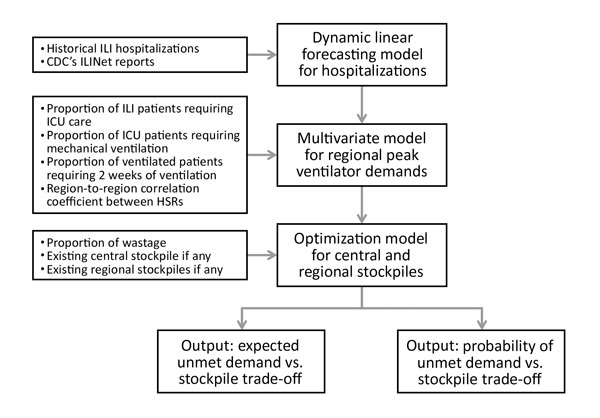Volume 23, Number 6—June 2017
Research
Stockpiling Ventilators for Influenza Pandemics
Figure 1

Figure 1. Overview of methods for projecting the need to stockpile ventilators for an influenza pandemic, Texas, USA. First, a forecasting model was used to estimate weekly hospitalizations at each site on the basis of historical ILI hospitalization data and CDC ILINet reports. Second, 3 additional factors, along with a spatial correlation coefficient, were used to form a probability distribution for peak-week ventilator demand at each site. Third, an optimization model was solved to determine local and central stockpile allocations and generate trade-off curves between the expected unmet demand and total stockpile and between the probability of unmet demand and total stockpile. CDC, Centers for Disease Control and Prevention; HSR, health service region; ICU, intensive care unit; ILI, influenza-like illness.
1Current affiliation: Precima, LoyaltyOne US, Inc., Chicago, IL, USA.